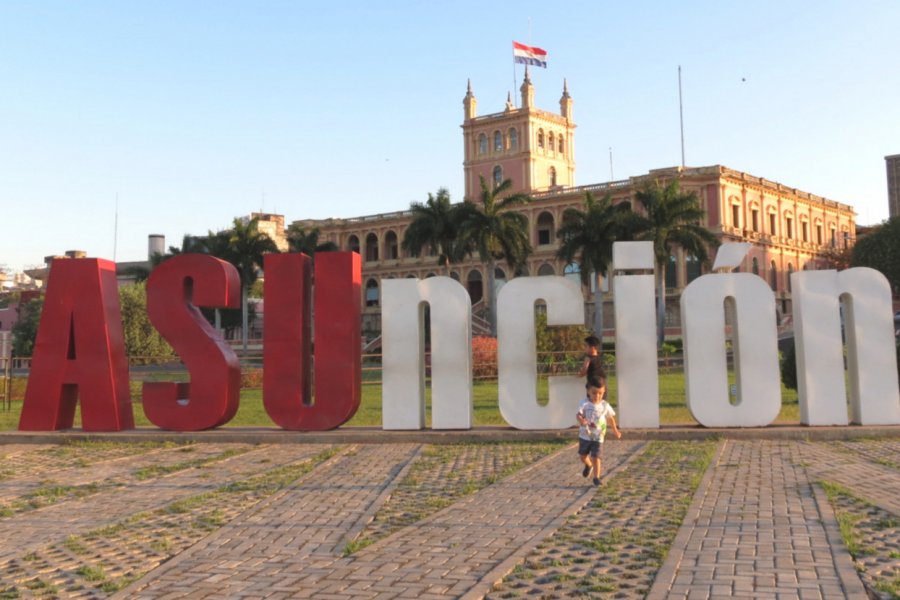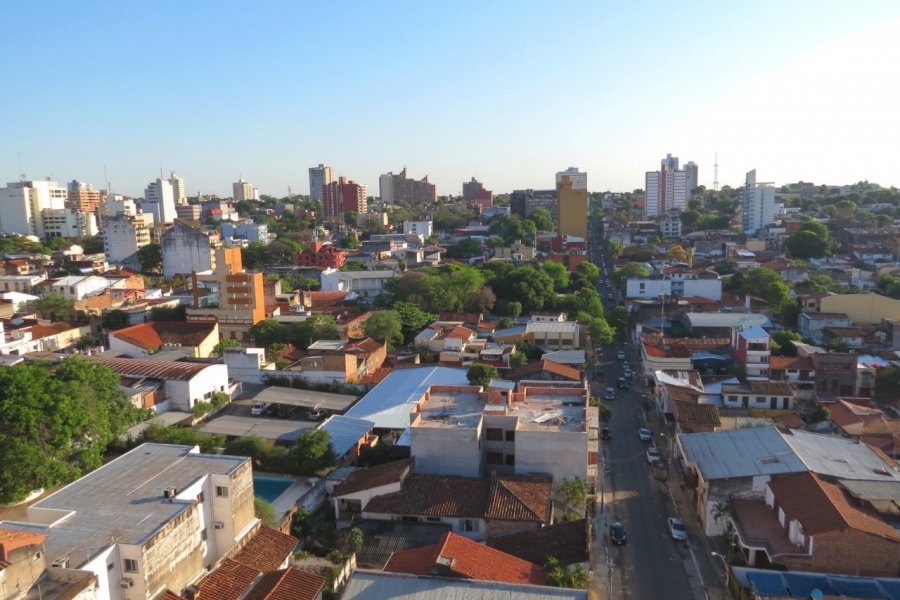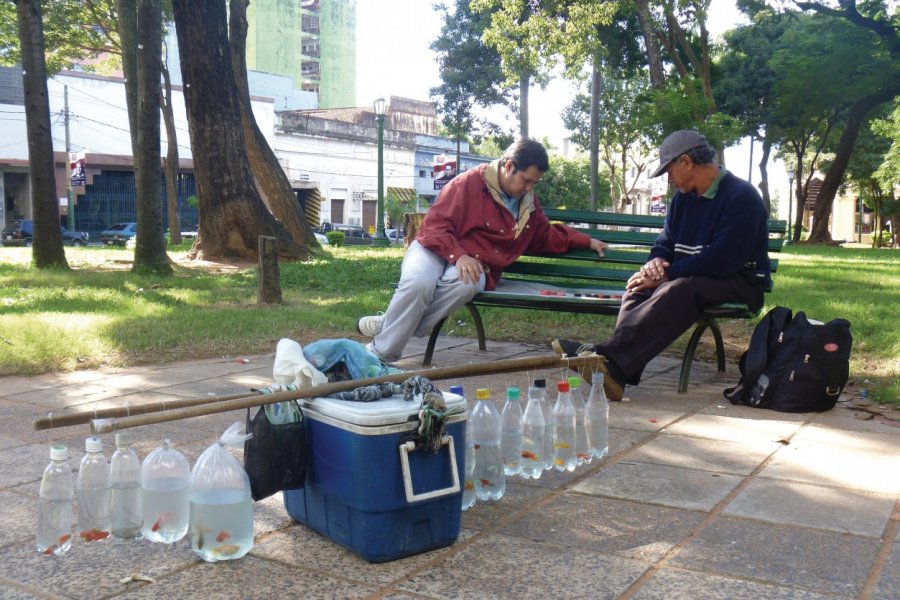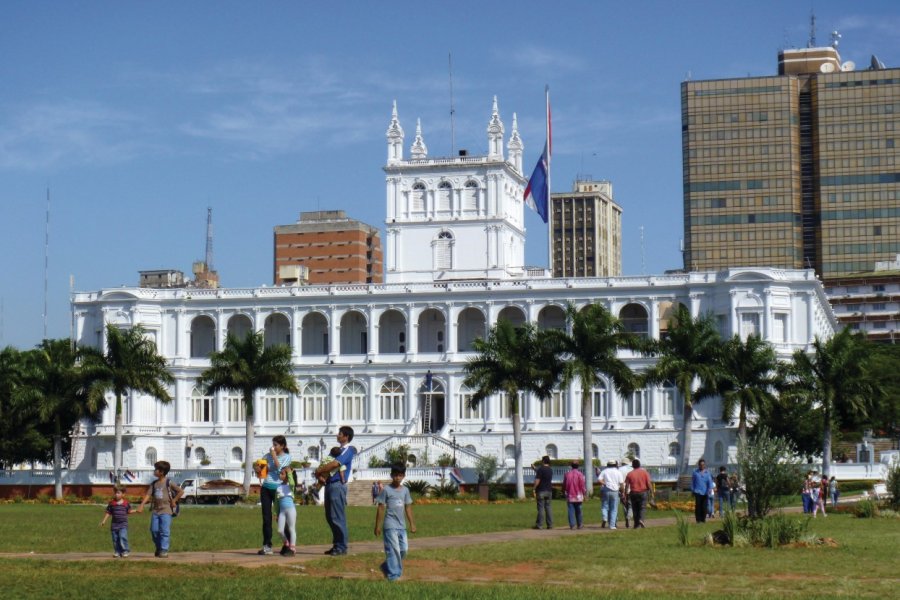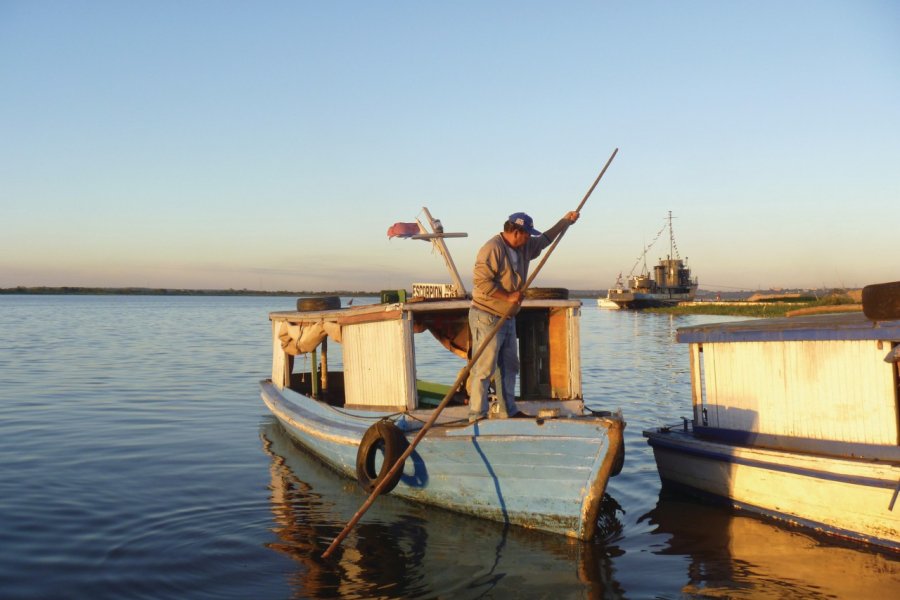Travel Guide Asunción
Find an accommodation
Advertising
By arriving by plane, you are going to ask yourself, by watching the small brick houses and the streets in latérite, if you're going to go well into a capital! The first impression is generally that of a city with lush vegetation. The trees are majestic: mango, jacaranda, or lapachos to beautiful bouquets of pink, white or yellow flowers during the winter. But quite quickly you will find yourself in a happy urban chaos: giant billboards, jugglers and pineapple sellers in red lights, old overloaded buses bearing the mention "Yo manejo, Dios cuida me" ("I drive, God guard"), skyscraper-abandonnés abandoned in the course of the yard, canvas of électriques of electric wires, red-white flags a little everywhere, barbecues on the sidewalks and especially full of people walking with a big one Thermos by hand!Asunción presents the classical contrasts of Latin American cities. Great wealth parallels extreme poverty. You'll soon notice these carriages pulled by, horses, carrying the waste that top kids like three apples have just sliced, but also these huge pick-filled pick-ups, or these beautiful hotels of the España avenues or Mariscal López.But we're quick to focus on this capital-sized capital, where you wake up with the singing of the birds (or the rooster), when you walk outside the center. This heterogeneous urban landscape is finally fairly harmonious, despite visual pollution and the wear of time. Buildings are never too high and the red brick brick of buildings accords perfectly with the green of the omnipresent trees. And then there's life on the streets, but without the stress of big European cities. Put yourself in a place and observe douce douce and relaxed human relationships.This city of 600 000 inhabitants (more than 2 million with the suburbs) covers 117 km ². It is built on seven hills, like Rome. The streets are pulled to the cord and most are one-way. The historic centre and port are on the shores of the Bay of Asunción. There is also the old quarter of Chacarita, a semi-slum with winding streets, regularly flooded by the river. A barrio that cannot be ignored by politicians because it is just under the windows of Congress!More to the east, still on the shores of the Río Paraguay, Sajonia and San Jerónimo are ancient neighbourhoods, with their own identity and inhabitants proud to live there. The rest of the capital is mainly made up of low houses and streets whose pavés were once better arranged. A few modern shopping centres, or shopping centers, grew in the late 1990 s in the residential district of Villa Mora and its surroundings. Here you will find luxury shops and trendy bars. The city has more traditional commercial areas such as the Mercado de Abastos, where fruit and vegetables are sold, and the indispensable Mercado Cuatro, where we sell everything!If you arrive on a Sunday or a holiday, you may be surprised. The city is completely deserted, except in the shopping centres and on the recent avenue which runs along a river arm, the Costanera. People stay at home around a lechona or return to their original village.
What to visit Asunción?
Advertising
Suggested addresses Asunción
x 38
The best restaurants
x 25
The best hotels
x 34
The best visits
x 5
Travel agencies
x 30
The best transportation
x 38
The best outings
x 9
Sport and leisure activities
x 14
The best treats
x 2
The best care
x 10
The best stores
x 2
The best home-deco
x 13
The best services
x 4
The best events
x 18
The good plans
Weather at the moment
Advertising
Organize your trip with our partners Asunción
Transportation
Book your plane tickets
Car Rental
Boat rental
Accommodation & stays
Find a hotel
Holiday rental
Find your campsite
Tailor-made trip
Immersion travel
Services / On site
Activities & visits
Find a doctor



